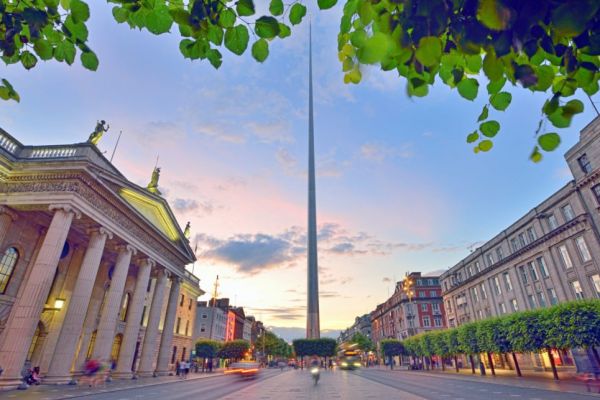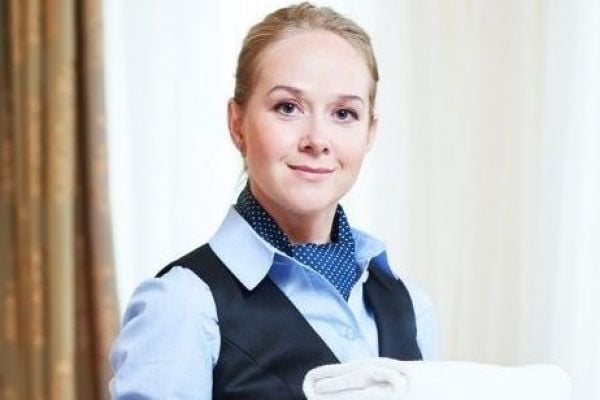After almost a decade of inactivity and as the cost of providing new accommodation now is more aligned with its earnings potential, a strong pipeline of new hotel accommodation stock is expected to improve tourism capacity pressures in Dublin by 2020. However, this activity is still being outpaced by growing demand and an expected shortfall of at least 1,100 rooms is still predicted for the city by then. These were the headline findings in "An Analysis of Tourism Accommodation in Dublin", a new report published this week by Fáilte Ireland.
Commissioned by the national tourism body, the analysis was carried out by Fitzpatrick Associates Economic Consultants, who estimate that from 2018-2020, a total of 5,436 hotel rooms will come on stream, including over 3,000 already under construction, representing - by Fáilte Ireland’s own estimates - private sector investment in Dublin of €815 million.
Locations And Figures
Amongst those developments expected up to 2020, two out of three of the additional rooms will be in new hotels, approximately 40% will be in the Dublin 2 and 4 areas, and one in seven will be in the Dublin 1 prime area (the North Docks and along the route of the Luas extension in O’Connell Street and Parnell Square). The rest of Dublin 1 and Dublin 8 account for over 1,500 of the projected new rooms. Another 460 rooms are expected at or close to the capital's airport, the area that experienced the highest levels of occupancy across the entire Dublin region in 2017.
Fáilte Ireland estimates that every additional 200 bed hotel will generates tourism revenue of €9 million, creates 180 jobs and contributes €2 million per annum to Exchequer earnings. The additional hotel bedrooms expected to 2020 should therefore generate approximately 5,000 jobs, €250 million in tourism revenue and €55 million annually for the Exchequer.
"The Gateway To Ireland"
Commenting on the report, Fáilte Ireland CEO Paul Kelly said, “Dublin is the gateway to Ireland with most visitors choosing to spend part of their stay in the city. Therefore, if visitors cannot access Dublin, it is highly likely they may not visit the country at all. That is why capacity in Dublin is not just an issue for the city but affects all who work in tourism – whether in Kerry, Louth, Waterford, Donegal or any point in-between.
“While it is great to see such positive capacity increases in Dublin accommodation, we need to ensure that our capital can cater for future demand if we are to sustain tourism growth. Growth in international visitor numbers and revenue is not only great news for employment but also for government finances, with 23 cent in every euro of tourism spend finding its way to the Exchequer. The tax take from tourists is now the equivalent of over €1,000 for every household in Ireland, generating €1.6 billion in all which helps fund education, and other important sectors. There is still a huge opportunity to further grow the contribution of tourism but, amongst other things, we need to ensure that Dublin can cater for more visitors.
“[This] report indicates that we will continue to have supply and demand pressures in the city. Given current and projected levels of visitor demand, there is certainly still a strong incentive for more investors and businesses to move into the sector. Importantly, any additional rooms and capacity in Dublin will not just benefit tourism but the economy as a whole.”
"Analysis Of Tourist Accommodation In Dublin 2018-20"
Meanwhile, Fáilte Ireland's "Analysis of Tourist Accommodation in Dublin 2018-20" found that Dublin remains a "medium-priced city destination" by European standards, with the average daily rates for hotel rooms in the Irish capital being lower than in top European cities such as Amsterdam, Barcelona, Copenhagen, London and Paris, as reported by The Irish Independent.
Average daily rates for Dublin were €125 in 2017, compared to average daily rates of just over €150 in Barcelona, while occupancy rates in Dublin were also higher than many European competitor cities at an average of 83%.
© 2018 Hospitality Ireland – your source for the latest industry news. Article by Dave Simpson. Click subscribe to sign up for the Hospitality Ireland print edition.









